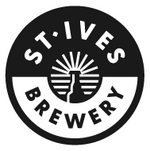Modern brewing 101: a simple guide to brewing craft beer
Is it just black magic that turns water, grain, hops, and yeast into delicious craft beer?
Sort of, but not really.
We chatted to our brewers, Tomasz and Ross, to get the low-down on the kit they use and the magical spells they lean into to brew your favourite Cornish beers.
Here's a not too scientific guide to the kit used to brew modern craft beer.
The Mash Tun
This is essentially a giant grain-tea infuser, a place where hot water meets crushed malted barley. The result of the process in this piece of equipment is a sugary liquid called wort.
On a basic level the mash tun turns breakfast cereal into a sort of beer juice. It's sort of like oatmeal or porridge but with lofty ambitions.
The Lauter Tun
Moving on, the Lauter Tun separates the liquid wort from the spent grain. This is a bit like a giant colander, sorting and sifting the yet to be realised beer.
To simplify it, and stick to our breakfast analogies, this filters out the chunky bits, so we don’t have porridge in our pint. You're welcome.
The Brew Kettle (a.k.a. Boil Kettle)
Once the wort is separated it can be boiled in the Brew/Boil Kettle and the hops can be added for bitterness, flavour, and aroma. This is where the beer starts to build its flavour, style and perhaps even a little attitude.
If we are talking breakfast analogies again, it turns sweet cereal water into something that could legally be called beer, or at the very least beer-ish.
The Whirlpool
A bit of a 'Ronseal' piece of equipment, the Whirlpool spins the wort to separate hop particles and trub (a delightful term for solids). Brewer's with whirlpools will add hops at this stage too, which will help the beer to build character through aromas.
Essentially this is where your beer goes through a good old fashioned spin cycle. It's a bit like a washing machine, but you get beer rather than lost socks at the end of the process.
The Heat Exchanger
The Heat Exchange rapidly cools the wort from boiling to yeast-friendly temperatures.
This cooling process is essential as it stops the yeast from dying a tragic, fiery death. The yeast is a pretty important part of the brewing ingredient list, and it turns out they are sensitive souls.
The Fermenter
In the fermenter you'll find that the wort is accompanied with yeast, and fermentation kicks off. Over several days or weeks, sugar turns into alcohol and CO₂. It's here that we'll be adding more hops, often dry hopping, to add further aroma and flavours.
This is where the real magic (and the burping) happens. To put it simply, the yeast eats sugar and that process creates beer. Isn't science super?
The Bright Tank (or Conditioning Tank)
The bright tanks are where the beer goes post-fermentation, it's where the beer can sit and chill out ready for the final stage of brewing. Carbonation is added, and it clears up the beer like sticking the heaters on your windscreen.
This is where the beers gets all dolled up, ready to meet its fans.
The Packaging Line
Not sure we need to explain this one. Once all the beer is done and everyone is happy then it is packaged.
It's bottled, canned or kegged and looks super sexy and delicious, which it most certainly is.
Then it's out the door to trade outlets, supermarkets or straight to our fans via online shopping.
There are loads more gadgets, valves, and mystical pieces of equipment that help us to create Cornish craft beer, but their inclusion here isn't really necessary unless you have grand plans to start a brewery.
All you need to know is that behind every great craft beer is a line-up of stainless steel contraptions, a team of brewing geeks with thermometers, and at least one person who insists they can taste the difference between 17c and a 23c IPA.





